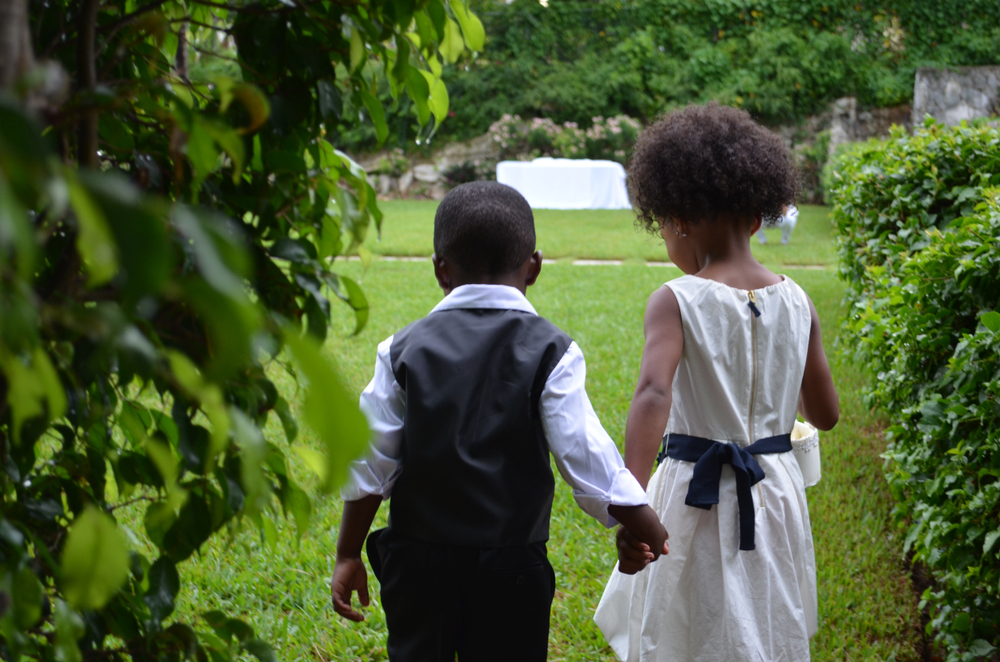What You Should Know About Children Choosing a Flower Girl and Ring Bearer

One common tradition in Canadian weddings is to include young children in the ceremony as a flower girl and ring bearer. Couples often have nieces, nephews, godchildren, or the offspring of close friends, especially those within the age range of three to seven, in these roles. As with other wedding details, careful consideration should be given to who should be in your ceremony. Do you even want young children at your wedding? Here’s what you should know.
Doing What You Want
Some might say that having a flower girl and a male ring bearer is old-fashioned and based on outdated ideas of gender roles. You can have anyone, even older children or adults, in these roles. Anyone can carry flowers or sprinkle petals down the aisle if that’s what you want. Similarly, anybody can carry the rings to the altar. You might even prefer to have someone in the wedding party hold on to the rings until it’s time to place them. It’s your special day, and you can do what you want.
Minding the Children
When it comes to cuteness, it’s hard to compete with a flower girl or ring bearer dressed up and resembling miniature versions of others in the wedding party. But before you get taken by how adorable the flower girl and ring bearer are, think carefully about a child’s temperament. Even the most precocious and well-mannered kids can become moody, shy, or distracted during your ceremony. Some people have the patience to deal with a child’s mercurial moods, but you might not, especially during such an important event. Many couples don’t invite kids to weddings and receptions for these reasons.
Young children may need their parents or other adults they are comfortable with to be close by during the wedding ceremony. Keep this in mind if you need to have a seating chart for the ceremony. Consider reserving seats near the altar or the aisle. Someone may need to quickly remove a child who’s throwing a tantrum or having a meltdown.
Choosing the Children
While your preferences are most important, be mindful of others’ expectations when it comes to a ring bearer or flower girl. Maybe you have a sibling who’s expecting a child to be in your wedding? What about that godchild or your bestie’s firstborn? What about children from your partner’s side of the family? Sometimes including a child is a way to honor the parents, especially if they’re not in the wedding party. It’s important to communicate your intentions early and clearly with those around you. Suppose there is a set of twins with whom you have a close connection. You may consider having multiple ring bearers or flower girls to keep everyone happy.
Being Inclusive
There’s no rule that says the person sprinkling petals must be female. Similarly, your ring bearer doesn’t have to be a boy. Many couples are degenderizing their ceremonies to be more inclusive, especially with respect to trans and nonbinary people. It’s good to honor the personhood of everyone involved, even young children who may be genderfluid or non-binary.
Counting the Costs
In many wedding parties, members are expected to cover the costs of attire and provide support to the couple on and leading up to the big day. Are you expecting the parents of the flower girl and ring bearer to pay for their outfits? Depending on your situation, you may need to budget for the participation of someone else’s child.
Having children at your marriage ceremony is one thing. Involving them as flower children or ring bearers is another. You and your partner should think carefully about whether you want to have youngsters in your wedding and everything that entails. Your union should be a joyous affair for everyone, including kids and their parents.

